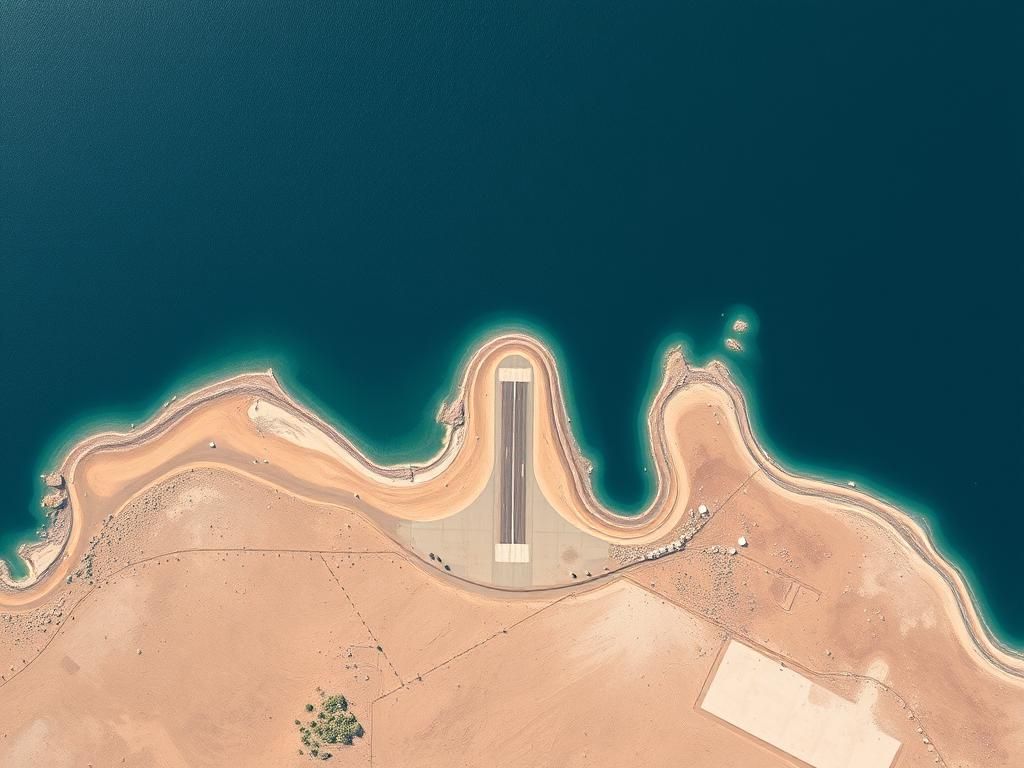
The discovery of a newly constructed airstrip on a remote Yemeni island has sparked international interest and speculation. As conflict in Yemen intensifies and Houthi rebels face increasing pressure, the emergence of this facility has raised questions about shifting power dynamics, regional security, and foreign strategic interests.
Strategic Location of Mayun Island
The airstrip is located on Mayun Island (also known as Perim Island), a small but geopolitically significant island in the Bab el-Mandeb strait. This narrow passage connects the Red Sea to the Gulf of Aden, acting as a critical chokepoint for global maritime traffic. An estimated 10% of the world’s seaborne trade passes through this strait, making it strategically valuable for both commercial and military operations.
Why the Airstrip Matters
Recent satellite imagery confirms construction of a military-grade airstrip that appears large enough to support surveillance aircraft, drones, and possibly fighter jets. This development comes at a pivotal moment:
- Houthi Forces Under Pressure: The Iranian-aligned Houthis, who currently control large swaths of Yemen, are facing mounting military and economic challenges.
- Foreign Involvement: The United Arab Emirates (UAE), a key player in the Saudi-led coalition, has reportedly taken responsibility for earlier similar activities on the island. However, no nation has formally claimed involvement in this latest construction.
- Shipping Lane Security: As the Red Sea lane sees frequent threats—from piracy in the past to more recent drone and missile attacks—control over Mayun Island offers a vantage point to monitor and potentially control maritime flows.
Context: Yemen's Longstanding Conflict
The Yemen conflict began in 2015 when the Houthis seized the capital, Sanaa, prompting a Saudi-led military intervention in support of the ousted government. Over the years, the war has evolved into a complex proxy battle featuring regional giants like Saudi Arabia and Iran. The humanitarian toll has been devastating, with thousands killed and millions displaced.
While international peace efforts are ongoing, ground realities often shift — and military infrastructure like the airstrip on Mayun Island could become pivotal in gaining leverage.
Who Might Be Behind the Airstrip?
Although no government has officially taken responsibility, experts suggest regional powers may be involved in a bid to solidify their influence and protect maritime interests. The UAE has historically shown interest in island bases as part of its broader strategy to control key ports and sea lanes across the Horn of Africa and the Arabian Peninsula.
The lack of accountability or official statements about the facility heightens suspicions about covert operations or long-term military entrenchment — a troubling notion in an already fragile region.
What This Means for the Region
As the Houthis continue to feel the squeeze from both international sanctions and military setbacks, the timing of the airstrip’s completion could be more than coincidental. Its existence raises important questions about sovereignty, maritime security, regional rivalries, and the future balance of power in the Middle East.
This unfolding development underscores the complexity of the Yemeni conflict. It also highlights the need for transparent international monitoring to ensure that such installations do not escalate tensions further or hinder pathways to peace.
Conclusion
The mysterious airstrip on Mayun Island is more than just a runway — it is a symbol of emerging strategies, hidden interests, and the high stakes in Red Sea geopolitics. As Yemen’s war rages on and the international community scrambles for diplomatic recourse, monitoring the island’s activity could provide key insights into future conflicts and alliances in the region.
In a world where unseen forces often drive regional shifts, Mayun Island’s airstrip stands as both a literal and symbolic beacon of the power plays shaping the Middle East today.
